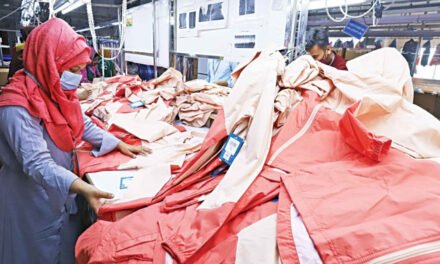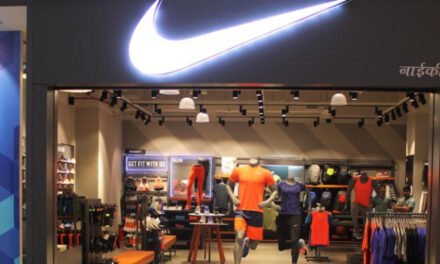 2nd International Conference on Cellulose Fibres,2–3 February (online event) – Cellulose fibres have a wide range of applications that are increasingly expanding. The markets are driven by technological developments and political framework conditions, especially bans and restrictions on plastics and increasing sustainability requirements.
2nd International Conference on Cellulose Fibres,2–3 February (online event) – Cellulose fibres have a wide range of applications that are increasingly expanding. The markets are driven by technological developments and political framework conditions, especially bans and restrictions on plastics and increasing sustainability requirements.
The environmental need for an industry based on renewable carbon puts natural materials in the spotlight. Cellulose fibres meet many demands: The demands of new policies, the demands of consumers with increasing awareness and a new sense of appreciation for natural materials, the market demands for diversely applicable strong and soft materials and the demands of our planet, which is already burdened far too heavy by microplastics and greenhouse gases.
“The first conference on cellulose fibres hit the mark. We have given the growing industry an ideal platform for exchange and networking. Due to the extremely positive feedback, we believe that we will be able to attract even more experts from the cellulose fibre sector for the second event.”,stated Michael Carus, CEO of nova-Institute and initiator of the conference.
In order to help innovations progress, to spread new ideas and to support the forming of a valuable and fruitful network, the 2 nd International Conference on Cellulose Fibres will cover the entire value chain and a huge variety of applications. Nova-Institute will offer extensive networking and participation opportunities at the online event using a special conference software from Finland. Participants will be able to take part in speaker discussions, face-to-face meetings with other experts and joint lunch breaks.
Asta Partanen and Michael Carus from the nova-Institute will be guiding through the 2-day conference, for whichalready110 participants from 18 different countries registered and 300 are expected. The focus will be on strategies, markets, technologies and sustainability – particularly on alternative cellulose feed stocks in order to reduce the demand for virgin cellulose. Nova-Institute is happy to welcome 24speakers from 10 different countries who are leading experts in many different fields and applications of cellulose fibres.
At the first day, four specialists will each give an outlook on the always changing markets and policies both of which increasingly focus on environmental product footprints. It is essential to always stay up-to- date in order to be successful.
Cellulose fibres are a success story within the textiles market with a cumulated annual growth rate (CAGR) between 5 and 10 percent over the last ten years – similar growth rates are expected in the next decade. This makes cellulose fibres the fastest growing fibre group in the textile industry and also the largest investment sector in the bio-based economy worldwide. These high growth rates are driven by the demand for natural fibres (and bottlenecks in cotton), the microplastic problem and looming bans for plastic fibres. Michael Carus, CEO of nova-Institute (DE): “The challenge now is to achieve a balance between the ongoing capacity expansion and the growing demand – to avoid overcapacities, but also to cover the growing demand of the big brands.” Alternative cellulose feedstocks, obtained from side- streams and recycling, will be the next valuable source of cellulose fibres. These can reduce the demand for virgin feedstocks, even though the overall demand for cellulose fibre will further increase.
To say it with the words of one of our speakers, João Cordeiro from AFRY (FI): “It is fascinating to observe the reshaping of the global cellulosic fibre industry, its structural transformation and even more so, the potential to improve the overall competitiveness of man-made sustainable textile fibres.”
Katharina Gregorich from Lenzing (AT) states that “unsolved waste problems call for innovative biodegradable solutions”. She and two other pioneers are representing companies that have integrated the concept of sustainability and circular economy into their product solutions, one of which are 100 percent biological and flushable hygiene products.
Visionaries like Dominik Mayer from Kelheim Fibres (DE), who promises “a plastic-free future in absorbent hygiene products without compromising on performance”, will take the audience on a captivating journey to new and exciting applications. Paul O’Connor from CELLiCON (NL) will present a new way to fractionate valuable constituents of biomass, polymeric cellulose and polyaromatic lignin, without destroying or damaging these components and without the use of enzymes or high-cost organic ionic liquids.
On 3 February, the second day of the conference, half a day on new technologies awaits the audience with technology development specialists like Heikki Hassi from SciTech-Service (FI), who will look deep “into the key factors and phenomena, related to the highly organised structure of plant cellulose.” and Stina Grönqvist from VTT (FI), who will give an insight into the use of different types of hydrolytic and oxidative enzymes for the modification of dissolving and paper grade pulps.
Last, but absolutely not least, five experts will provide their knowledge and perspectives on alternative feedstocks.We are looking forward to the first hemp-based lyocell fibres, performance enhanced bast fibres and the use of bio-based ionic liquids for cellulose recovery from various alternative feedstocks including the recycling of textiles and biomass waste streams.
Another highlight at the conference will be the first Innovation Award “Cellulose Fibre Innovation of the Year”, sponsored by Levaco (DE)!The innovations submitted are a performance show of cellulose fibre: From cellulose foam for packaging over plastic-free menstrual products to EMI shielding materials, the nominated six applications can help build a sustainable economy. The six nominees will present their cellulose fibre technology or application on day one of the conference. Afterwards, the conference audience will elect the three winners of the title “Cellulose Fibre Innovation of the Year 2021”.
Ralf Nyhoven, Levaco (DE) about last year’s Cellulose Fibre Conference: „We’ve seen a lot of interesting speeches with promising outlooks on these fibres of the future. We believe in renewable, sustainable fibres [and] we will for sure follow this unique event in Europe in the next years, where we get fresh ideas and meet a lot of interesting people.”
The final conference programme and registration is available at: www.cellulose-fibres.eu/programme and www.cellulose-fibres.eu/registration.





















